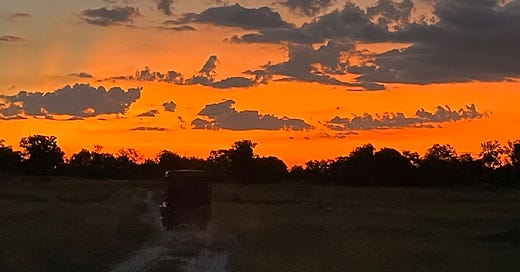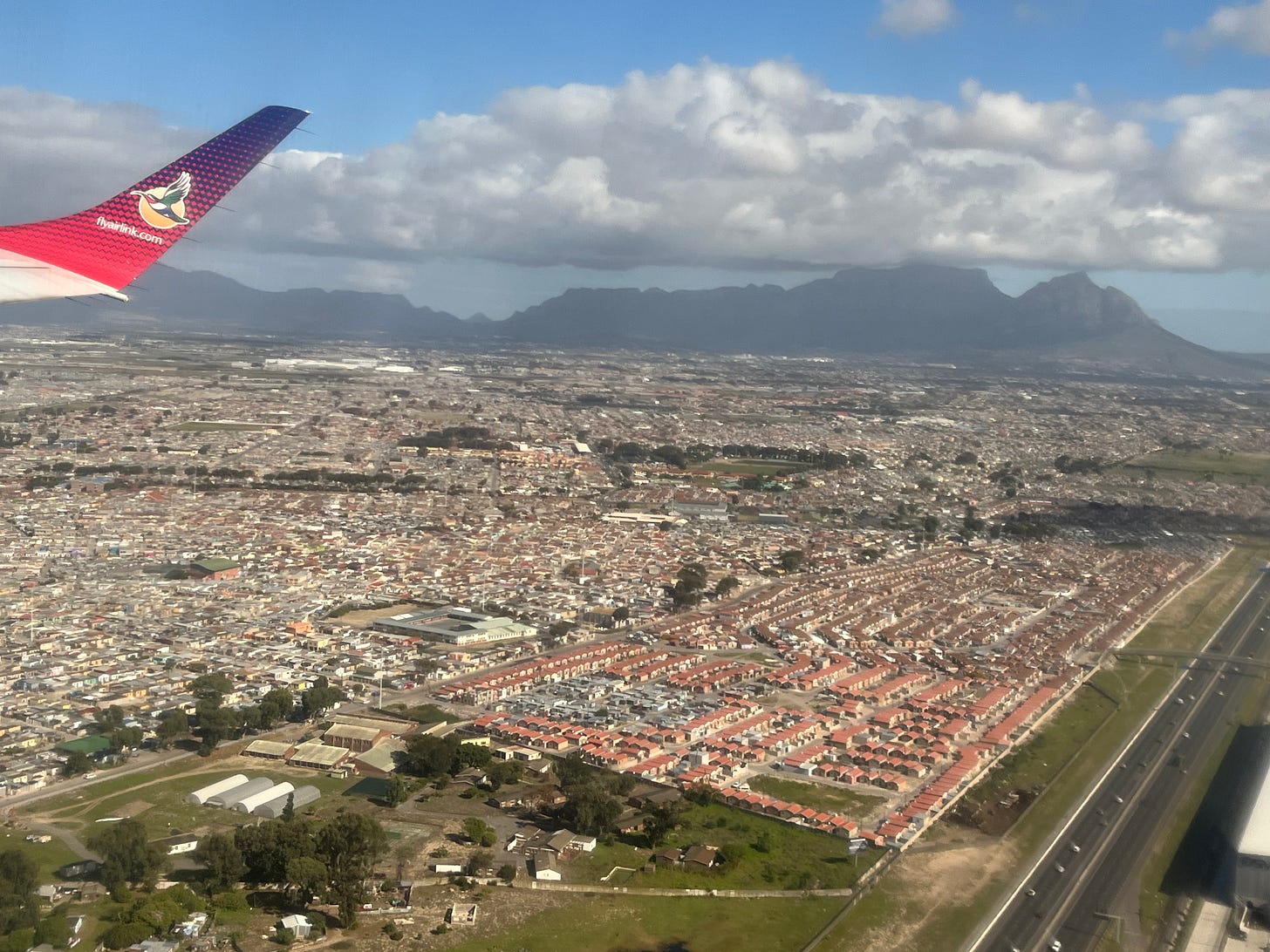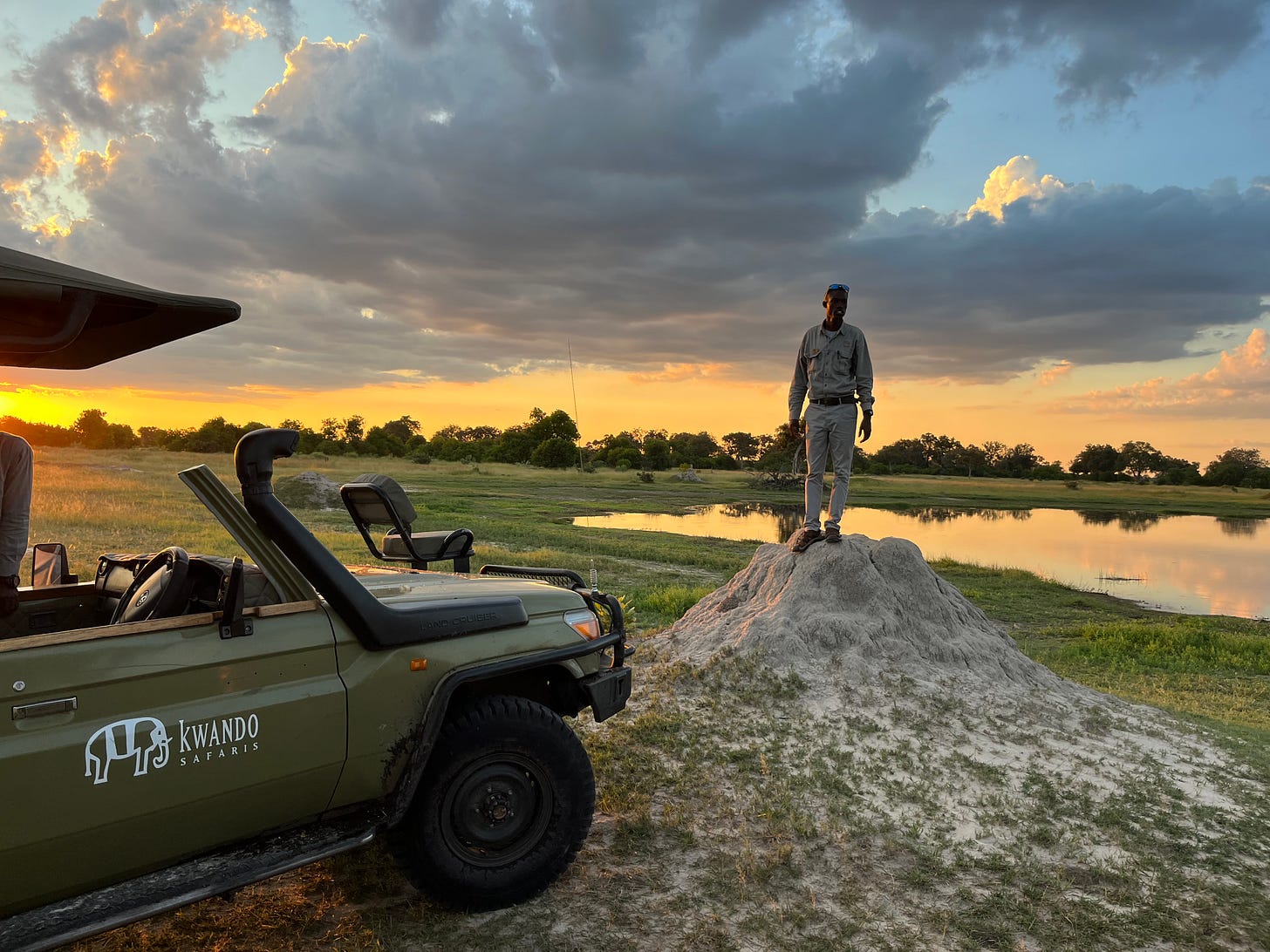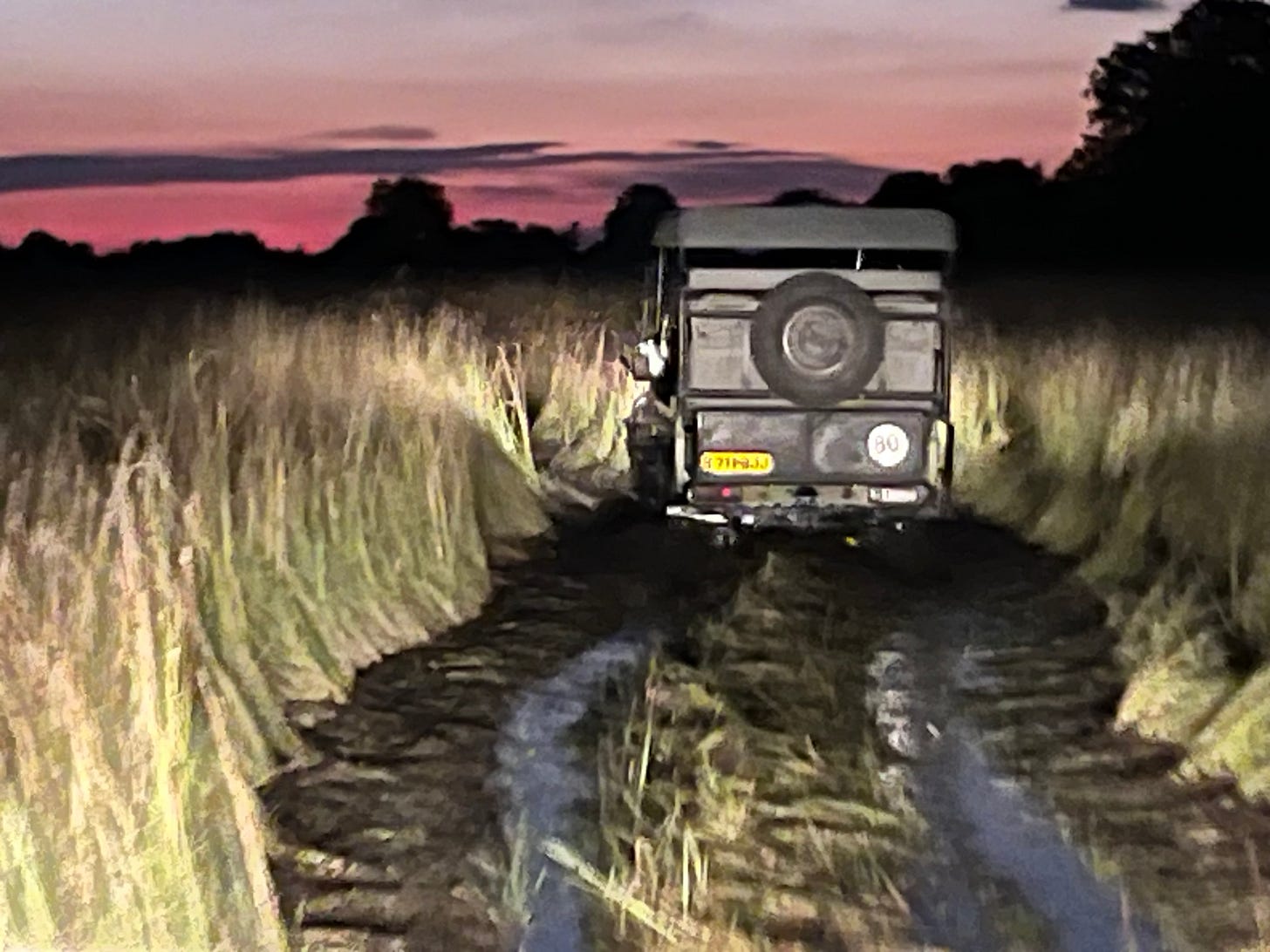The highlight of our Africa journey surely awaited us in the Okavango Delta safari region of northern Botswana, which entailed a 2.5-hour flight from Cape Town, South Africa to Maun and another 30-minute small plane ride to get to our Kwando 4 Rivers Camp.
In preparing for the trip, I’ve learned a lot about Botswana. It is a land of paradise that Prince Harry and Meghan Markle like to visit. The wildlife will include many of the big famed African animals as well as equally entertaining small ones like the continent’s highest concentration of endangered wild dogs plus geckos and meerkats. There is also said to be a pristine wilderness with little human impact—making it a serious draw for people serious about their safaris. Its rich history is apparently mesmerizing as one looks across the landscape and wonders how such a vast and magical place could have unfolded.
Despite this magic, Botswana and its wilderness areas are not exempt from Earth’s problems. The government has done a good job of keeping the country prosperous with the sale of diamonds, the exporting of beef, and a thriving tourism economy. Some of the revenue from safaris, which Botswana does highly limit in terms of numbers, gets funneled into helping its poorer communities subsist.
Some Botswana stats to know: the population is around 2.5 million, it is about the geographic size of the U.S. state of Texas, life expectancy is around 55 years, Gaborone is the capital, people earn on average nearly $8,000 per year, the currency is the pula and the exchange rate is about 14 pula for a $1, people mostly speak English and Setswana, Christianity is the major religion, and there is a virtually 0% crime rate. The country has been independent from the British since 1965-1966, when it was also renamed from Bechuanaland to the Republic of Botswana.
We arrived in the late afternoon to acclimate to our new home of the next four days. After refreshing ourselves and watching the hippos that live in the water all around 4 Rivers, we took the first of many safari drives and some of our first sightings included blue and purple starlings and tons of butterflies near the airstrip, a warthog, stunningly tall termite hills, impalas, and giraffes.
Along our journey, we stopped at a watering hole with a crocodile to enjoy happy hour and a local lager named Saint Louis. As it turned to darkness, we made our way back for our 8 p.m. dinner, but not before encountering red lichwe antelope, wildebeests, African fish eagles, more warthogs, ducks, the aqua-colored woodland kingfisher, a yellow billed stork, wattled cranes, and gray go-away lorry birds (also known as the punk rocker bird). We looked in the dark for a leopard (cheetahs are seen in the day) but they are difficult to find and we didn’t succeed on that front.
But all was more than well, as the day ended at a long table in the common area with some other guests from Great Britain and delicious Okavango fish and pulled beef. It didn’t take long to fall asleep in our huge tents, which we access via long walkways. There is one structure for adults and one for kids, with the rest of my family in three other quarters. It also didn’t take long to wake up, as around midnight, hippos played right outside our porch in the water.









